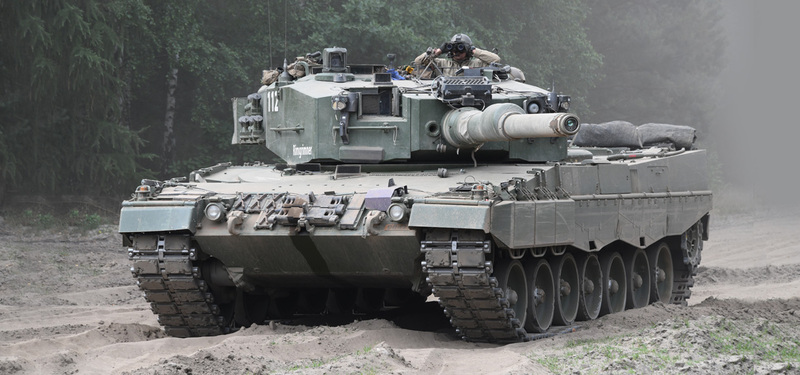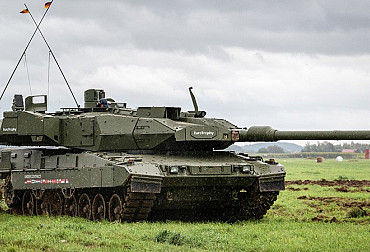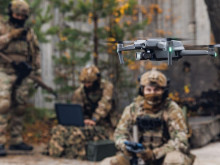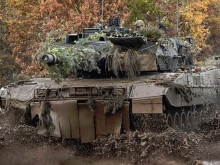Ukraine is facing a battle of Russian and Western schools, says Chief Warrant Officer of the 73rd Tank Battalion
Western tanks are too heavy. There will be no one to service them. On the battlefield, quantity will outweigh quality. These and many other claims about the tanks that Western countries are preparing to send to Ukraine have been heard across the public lately. Martin Svačina, the chief warrant officer of the 73rd Tank Battalion, is an expert on tanks who has essentially dedicated his life to them, and describes what the real application of Western tanks is on the Ukrainian battlefield.
After months of dithering, the German Government has decided to comply with Ukrainian requests and provide the country with its modern Leopard 2 tanks, which are spread across Europe. The Czech Republic, which has its first Leopard 2 A4 so far, has also expressed interest. In the first phase, Ukraine will receive 14 Leopard 2 A6s from Germany, which are expected to arrive this spring. At the same time, the German Government has agreed that other countries with Leopard tanks produced in Germany can also send Ukraine Leopard tanks, which some countries have already taken advantage of (e.g. Poland should deliver 14 Leopard 2 A4 tanks, Germany, Denmark and the Netherlands together should send up to 178 Leopard 1 A5 tanks). The United States has also confirmed the delivery of its tanks, and will supply Ukraine with 31 M1A2 Abrams tanks.
 Picture: M1A2 Abrams tank at Fort Irwin, California | Spc. Nathan Franco / U.S. Army
Picture: M1A2 Abrams tank at Fort Irwin, California | Spc. Nathan Franco / U.S. Army
The British will deliver 14 Challenger 2 tanks. In practice, this means that Ukraine is likely to receive dozens of modern tanks that could at least match the existing forces on the battlefield. However, everything has its limits.
 Picture: Leopard 2 A4 in the service of the Czech Armed Forces | Jan Zilvar / CZ DEFENCE
Picture: Leopard 2 A4 in the service of the Czech Armed Forces | Jan Zilvar / CZ DEFENCE
"The technological superiority of Western tanks is, of course, redeemed by greater demands on servicing. Especially in the case of the Abrams tank's gas turbine, where the maintenance requirements are enormous. I think that the Ukrainian army will have great difficulties in carrying out maintenance and servicing of these power units of American tanks. And if neglected for a long period of time, there may be breakdowns that will result in the shutdown of operations and the need to move this equipment abroad for repairs," said Martin Svačina, chief warrant officer of the 73rd Tank Battalion.
Svačina expects the Western tanks to be effective in combat, but the speed and level of training of the crews and, not least, how the soldiers subsequently train on the battlefield will be crucial to success against the likely numerical superiority of Russian equipment. And that is the purpose of Western, modern tanks – to be able to cripple a numerically superior enemy in smaller numbers.
"The presence of these Western machines will give Ukraine an undeniable technological advantage in the field of mechanized units. However, in these numbers, and assuming that the Ukrainian command wants to deploy them immediately into combat, I do not foresee a significant turn in the development of the situation at the operational level. Rather, it would be a matter of achieving partial tactical successes in the sections of the front line where these units would be deployed. Gradually, these units could also be worn down until they are replaced," Svačina said.
"Basically, it will be a clash of two tank schools, with the eastern side of the tank school, the Russian one, being dominated by the philosophy of a tank that is inexpensive to produce, cheap, simple to operate and can therefore be deployed in large numbers. This concept is not expected to have a long service life for the equipment or the crew, and is expected to be replaced by other machines from the reserves. In contrast, the Western (or, historically, German) tank school focuses in exactly the opposite direction," the expert adds.
 Picture: British Challenger 2 and Polish Leopard 2 A4 during Exercise Black Eagle in 2014 | Wikimedia Commons / Public domain
Picture: British Challenger 2 and Polish Leopard 2 A4 during Exercise Black Eagle in 2014 | Wikimedia Commons / Public domain
"Another fact is that Western tanks assume the possibility of destroying enemy tanks from a distance of three kilometres, however, the European battlefield offers the possibility to see and shoot at a maximum of around two kilometres. For this reason, there may be some reduction in this advantage," says Svačina. This may reduce the potential advantage of modern Western tanks in Ukraine, but these machines can still do a lot.
Germany has been relatively slow to allow the export of Leopard tanks to Ukraine, which may have a knock-on effect on the battlefield. The weather in Ukraine in the coming weeks will not be optimal for the heavier Western tanks, and muddy and waterlogged roads could be a problem. "An illustration of a poorly planned operation in terms of tank deployment can be seen in the launch of the Russian Federation's special operation on the territory of Ukraine after 24 February 2022. Troops began their movements and subsequent combat operations during a period of thaw and spring thaw, which meant that heavy equipment was forced to move only on roads and was unable to deploy in the event of an attack or response to an attack by Ukrainian forces. This is due to the fact that once off the roads, the heavy equipment would not be able to manoeuvre effectively or would even be directly stranded," said Svačina.
There is plenty of footage from the Ukrainian battlefield of Russian equipment getting helplessly stuck in impenetrable, muddy terrain, making it easy prey for Ukrainian soldiers. This would probably have happened even if Western tanks, which are heavier than Russian machines, had been deployed. And what role would the weight of Western tanks play on the Ukrainian battlefield? "The higher weight of Western tanks does not play a big role. Since the specific ground pressure of tanks does not vary much from model to model, I do not expect that, all things being equal, Western ones would significantly lag behind Eastern types. Just for comparison, for example, the Leopard 2 A4 tank has a specific ground pressure of 0.83 kg/cm², whereas the T-72M1 has a specific ground pressure of 0.82 kg/cm², and the Leopard is 13 tonnes heavier," explains the Chief Warrant Officer.
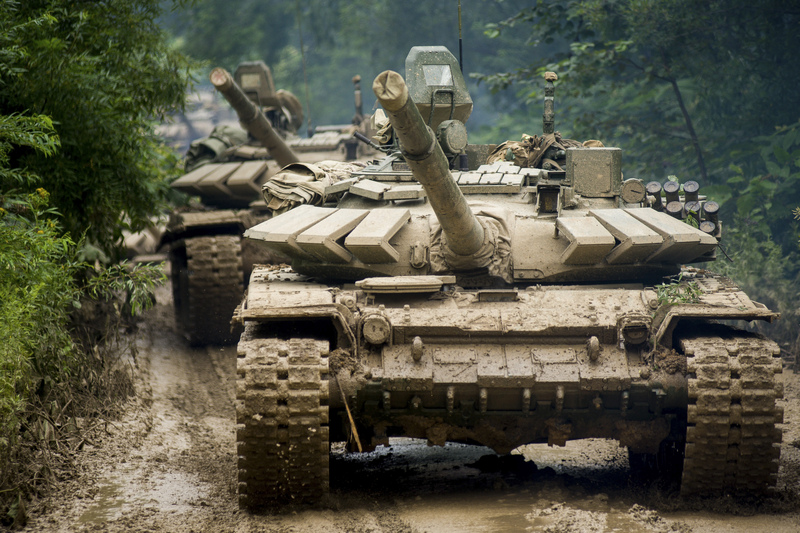 Picture: There are many images from the Ukrainian battlefield of Russian equipment helplessly stuck in impenetrable, muddy terrain, making it easy prey for Ukrainian soldiers. This would likely have happened even if Western tanks, which are heavier than Russian machines, had been deployed. (illustration photo) | Shutterstock
Picture: There are many images from the Ukrainian battlefield of Russian equipment helplessly stuck in impenetrable, muddy terrain, making it easy prey for Ukrainian soldiers. This would likely have happened even if Western tanks, which are heavier than Russian machines, had been deployed. (illustration photo) | Shutterstock
Literally the whole world will learn from the events on the Ukrainian battlefield, including the future deployment of Western tanks. As the Chief of the General Staff of the Army General Řehka said, but also many others: Ukraine will now have the most experienced soldiers in Europe, so we must draw experience from them. This also applies to the involvement of Western tanks, which the Czech Army is also introducing into its armament.















